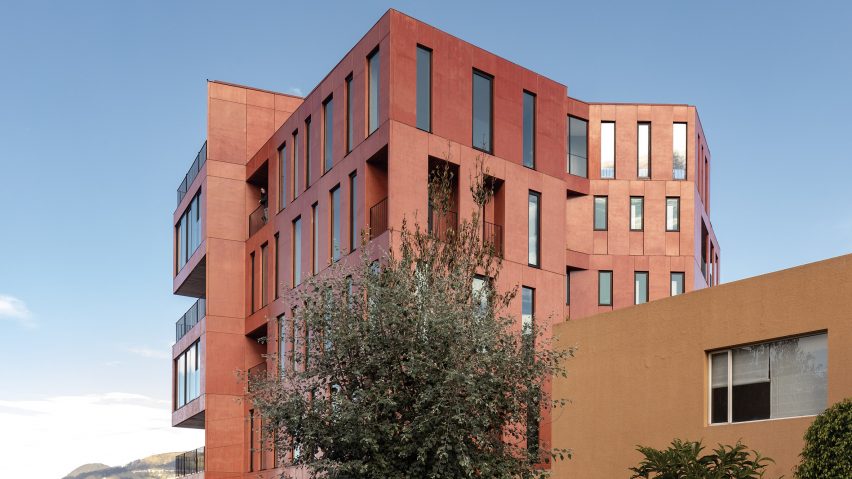
Urlo Studio completes stacked pigmented-concrete complex in Quito
Urlo Studio has designed a rotated, triangular mixed-use complex clad in red concrete panels and terracotta tiles that is meant to reference the architectural heritage of its site in Quito, Ecuador.
Completed in 2022, the project known as Olvia contains 14 residential units and commercial space, totalling 4,285 square meters on a steep 760-square metre in the Bellavista neighbourhood of the country's capital city.
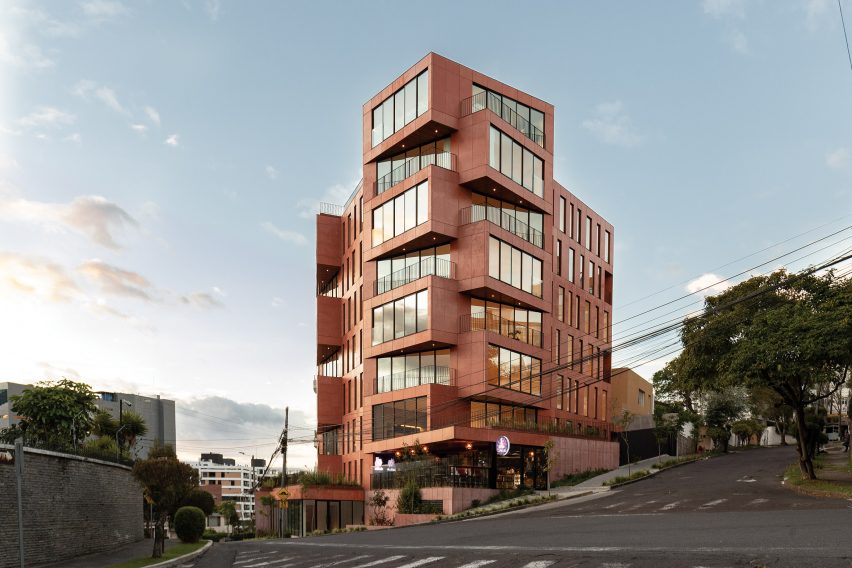
Urlo Studio, which has offices in Quito and Valencia, drew ispiration from the site and surrounding context to create the unique volumetric form and reimagine the public space for the usability and safety of pedestrians.
"The pronounced topography provides the building with spectacular views of the city, so we incorporated windows that rotated on an imaginary axis at the corner of the building, which allowed each apartment to take advantage of those views," the team told Dezeen.
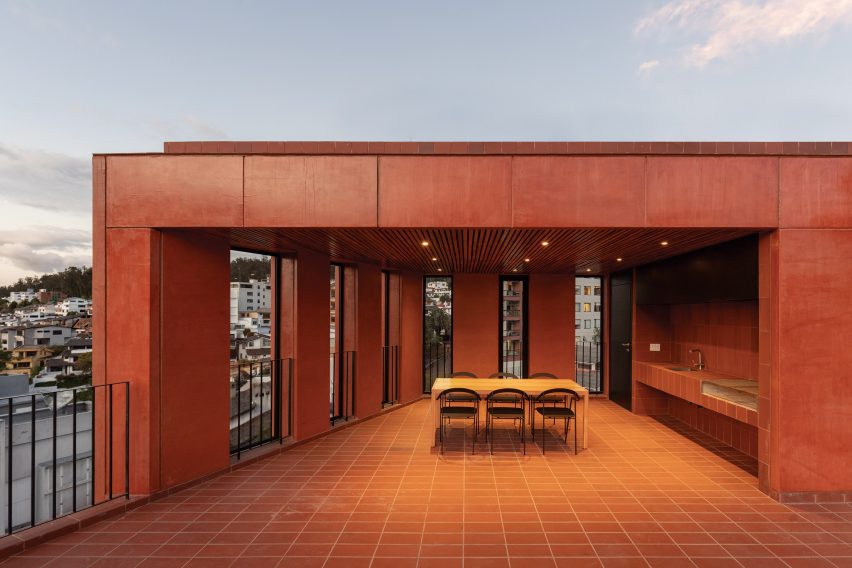
Rather than using the contextual perimeter walls that enclose properties, the team opened the ground floor with two commercial spaces that are set into the sloping site with planted terraces.
Above, two- and three-bedroom apartments rotate around a central courtyard.
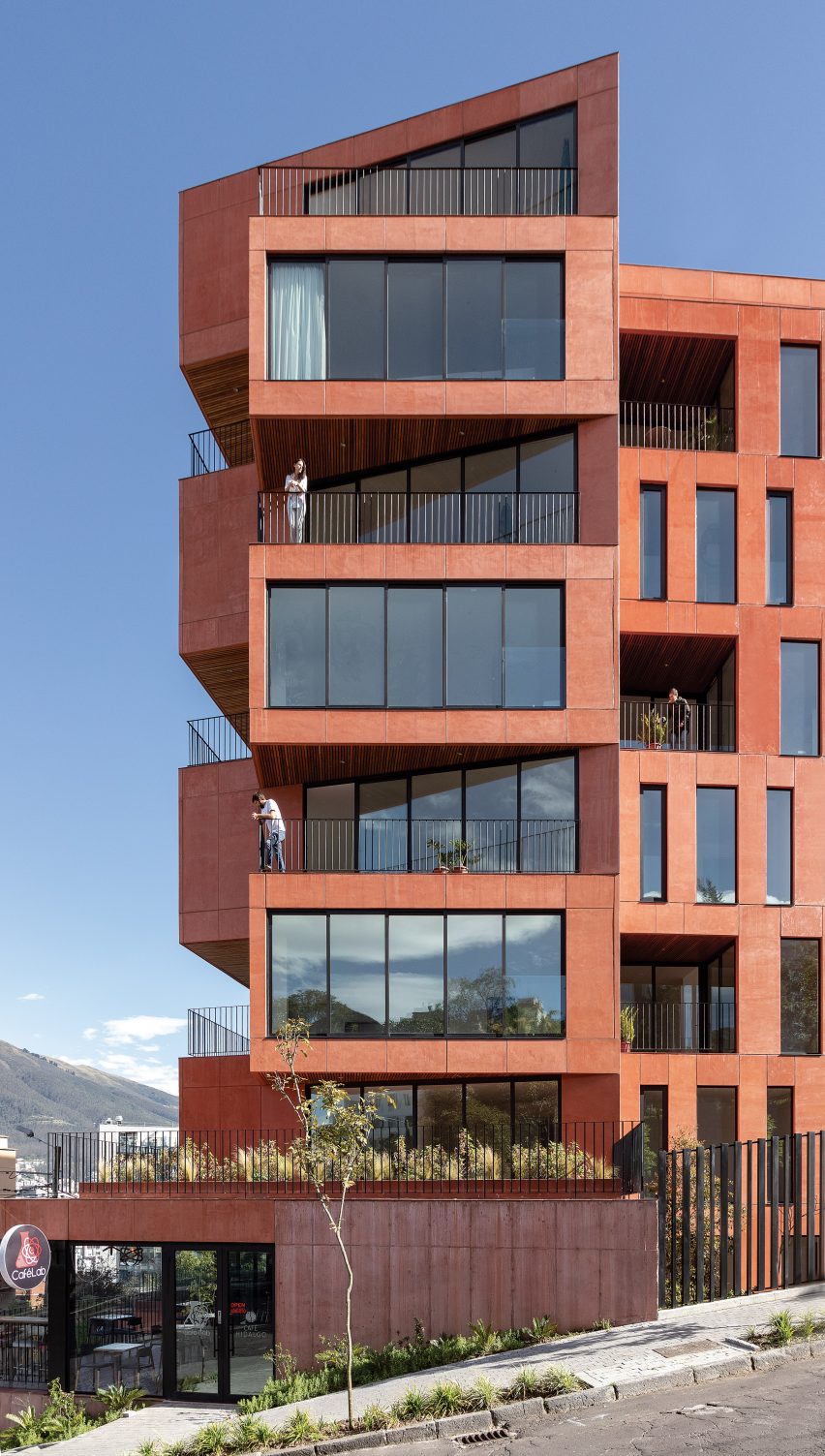
"As the building grows in height, it pivots on a central axis located in the main corner of the property, generating a series of superimposed volumes that create terraces," the studio said.
"These protruding volumes house the common areas of each apartment and are characterized by the large windows that allow residents to enjoy panoramic views of the city."
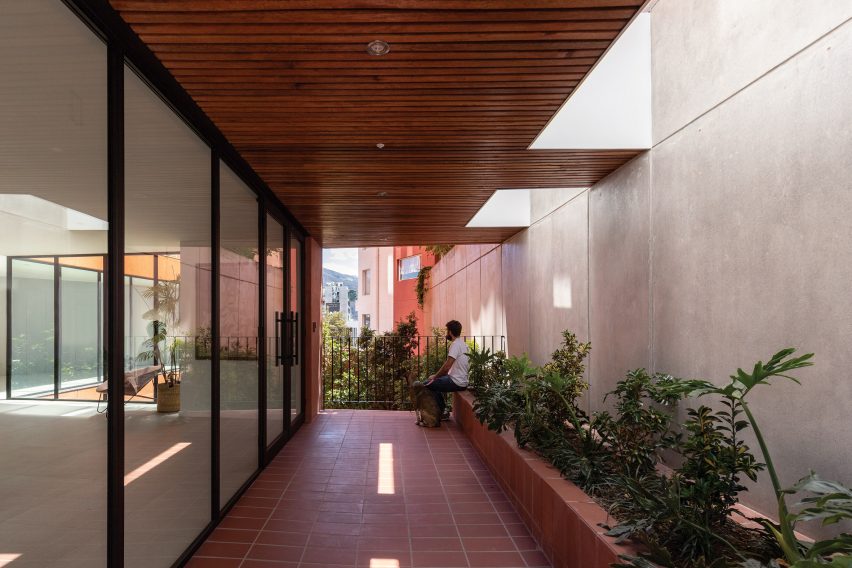
The rotation creates a staggered sawtooth condition along the primary corner with balconies, whose angled openness is mimicked in the community roof deck that looks out over the city.
Within the building, the circulation is characterized by a series of open-air green spaces – complete with native plants – that improve the residents' journey from the street to their homes.
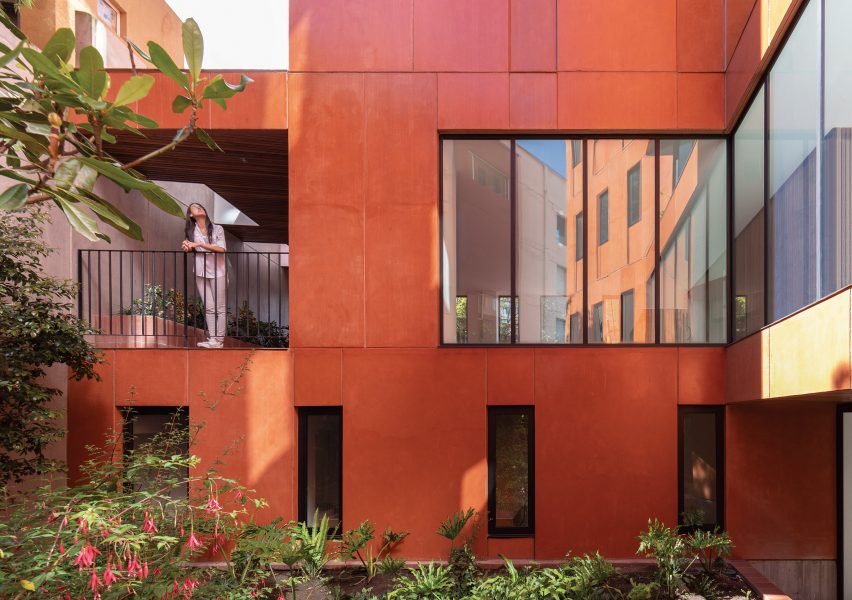
"The facade material, color, and construction system are unique for the location of the project and stand out because there are no buildings in Quito that have used the exact same construction technique," the studio said.
Compared to the traditional concrete block system of the area, the design incorporated a series of lightweight, precast concrete panels that were pigmented with red dye and lightened with recycled expanded polystyrene.
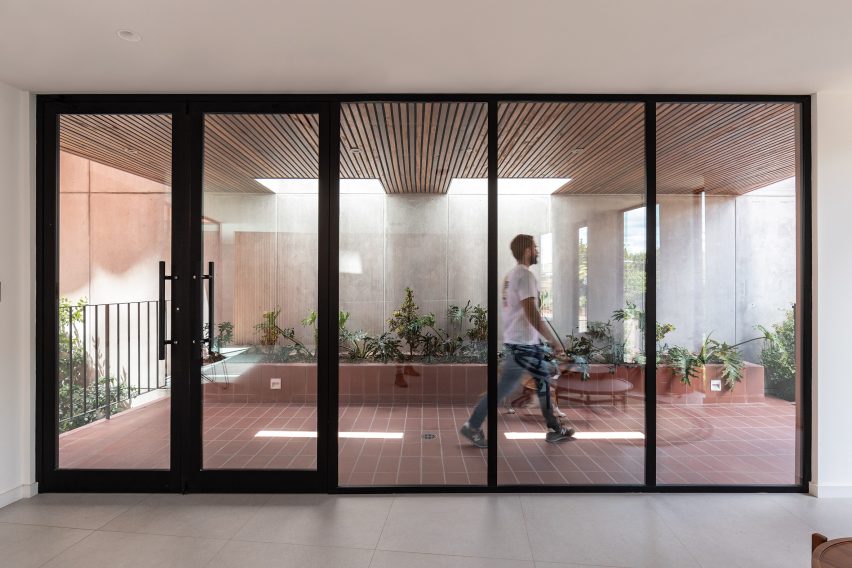
The panels – each 3.15 meters tall but with varying widths – provide better thermal and acoustic conditions inside the apartments and respond to the area's seismic conditions.
"The reddish color of the building derives from a volcanic stone that is found in Quito called andesita, which is traditionally used for walls and exterior paving in the city’s buildings," the studio said.
It is complemented by terracotta tiles along exterior floors and natural seike wood soffits for a warm, organic palette that is highlighted by discrete black metal railings and window frames.
On the interior, the finishes are simple and clean with laminated wood parquet floors, porcelain tiles and lacquered MDF cabinets for the kitchens and closets.
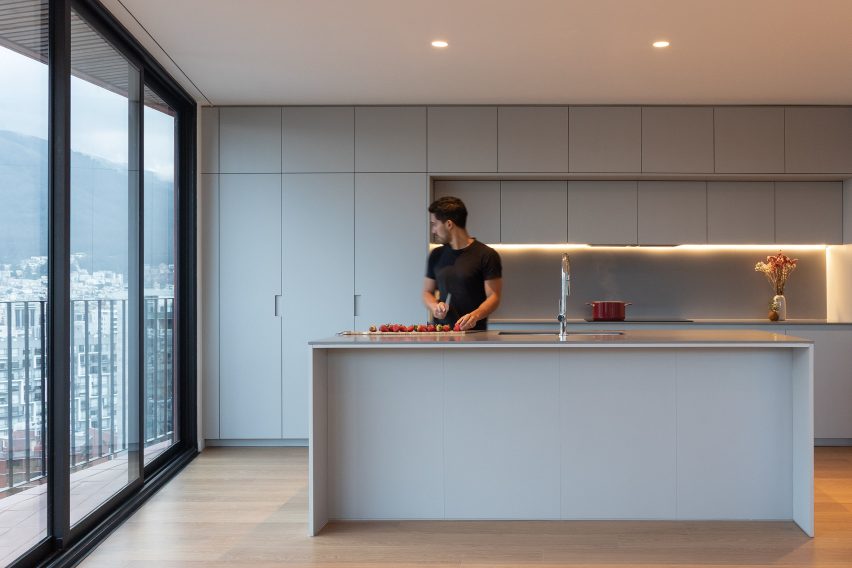
The apartments feature expansive glazing – floor-to-ceiling vertical windows that follow the pattern of the façade panels and interior windows that allow for cross ventilation through the central courtyard – that bring natural light into the building's compact footprint.
Ecuador's capital city boasts a number of recent high-profile, mixed-use projects including Safdie Architects' 24-storey tower with an undulating facade and Quito's tallest building completed by BIG with a curving, pixelated facade.
The photography is by JAG Studio.
Project credits:
Architecture: URLO Studio
Architectural support: Iker Gómez
Electrical engineering: AELEC
Mechanical and plumbing engineering: Hydrogroup
Structural engineering: Juan Carlos Garcés
Landscape design: Clemencia Echevarria
General contractor: InmoQL